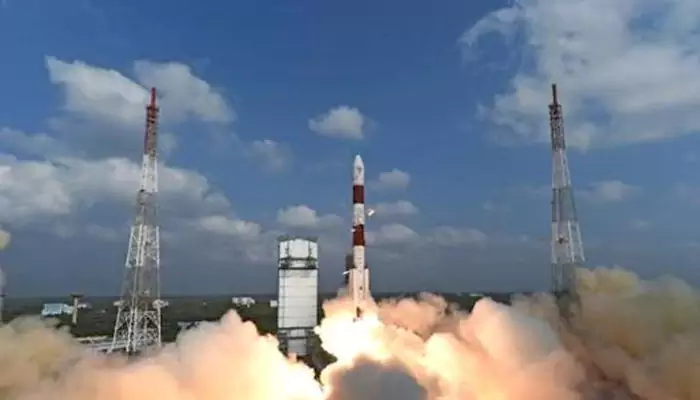Climbing from 11th to 5th: The Role of Startups, Tech, and Innovation in India’s Economic Revolution
- Devyani
- 1 year ago
- 4 minutes read

India has emerged as the 5th largest economy, soaring from the 11th place to the 5th position in just ten years! India’s economy mushroomed by over 90% between 2013 and 2023, according to the IMF’s World Economic Outlook data. This extraordinary growth rate is the highest among all major economies over the past ten years!
India’s economic landscape has witnessed a dramatic change over the past decade, with advancements in technology and innovation playing a key role in this tale of growth and development. From the advent of a buzzing startup ecosystem to the rapid advancement of digital infrastructure, technological developments have driven India towards becoming the 5th largest economy.
The Rise of the Startup Ecosystem
Fortified by a boost in a supportive policy environment, and entrepreneurial spirit, India has become home to one of the world’s fastest-growing startup ecosystems. As per the Economic Survey 2023, India has over 90,000 startups, with 100 unicorns- which are startups with a valuation of over $1 billion. Thanks to initiatives like Startup India launched in 2016, which boosted the growth of startups through easier compliance, tax exemptions, and access to funding.

India’s Startup Ecosystem in 2020
Capitalizing on India’s huge internet user base and surging smartphone penetration, the charge has been led by technology-driven sectors like ed-tech, fintech, and e-commerce. For instance, digital payments in India are revolutionized, and transformed by the companies leading the fin-tech sector like Paytm and PhonePe. More than 9 billion transactions worth Rs 13 lakh have been made successful through the Unified Payment Interface each month, as of 2023, making it one of the largest digital payment ecosystems globally.
Digital Infrastructure: A Game Changer
India’s technological transformation has been bolstered by a powerful digital infrastructure. For instance, by boosting online infrastructure and improving internet connectivity, the government’s Digital India Initiative, launched in 2015, the center ensured that government services are made available to every citizen electronically. This has led to a significant increase in internet penetration, with over 850 million internet users in India as of 2023, making it the second-largest internet market globally.

Rural India has also experienced digital transformation, thanks to advancements in digital infrastructure. For instance, to bridge the digital divide between urban and rural areas, government initiatives like BharatNet focus on connecting more than 250,000 gram panchayats with high-speed broadband. This link has opened the door for new opportunities in these areas like online education, telemedicine, and e-commerce, fueling the country’s economic growth and bettering the quality of life.
Technological Advancements in Key Industries
Several key industries have been at the forefront of India’s economic boom, employing technology and innovation to drive growth.
Information Technology (IT) and Services
 and Services.webp)
Contributing more than 8% to the national GDP and employing over 4.5 million people, Information Technology and services continue to remain the mainspring of India’s economy,
Indian IT giants like TCS, Infosys, and Wipro have continued to pioneer artificial intelligence, cloud computing, and cybersecurity solutions, maintaining India’s stance as a global IT powerhouse.
E-commerce

The e-commerce sector has witnessed explosive growth, driven by increased internet penetration and a burgeoning middle class. Companies like Flipkart, Amazon India, and Reliance’s JioMart have redefined shopping experiences with innovations in logistics, digital payments, and customer service. According to IBEF, India’s e-commerce market is expected to reach $200 billion by 2026, up from $38.5 billion in 2017, showcasing the sector’s rapid expansion.
Renewable Energy

India has promised to reduce its carbon footprint and therefore has led numerous significant investments in renewable energy. By 2030, India aims to achieve 500 GW of renewable energy. Companies like Tata Power Solar and Adani Green Energy, have bolstered the growth in solar energy by lowering costs and scaling up production. India is now one of the world’s top solar power producers, with the country having installed 60 GW of solar capacity as of 2023.
Healthcare and Biotechnology

In the wake of the COVID-19 pandemic, India’s healthcare and biotech sectors have also championed innovation. The country’s ability to quickly develop vaccines and ace up its production has earned recognition globally. Not only have companies like Serum Institute of India and Bharat Biotech met domestic demand, but also acted as major exporters of vaccines.
Going forward, emerging technologies like 5G, blockchain, and artificial intelligence are also being eyed by India for unlocking new avenues for growth. The government has focused on nurturing an innovation-driven economy, paired with a budding and dynamic workforce. This positions India at the top of the global economic stage.












